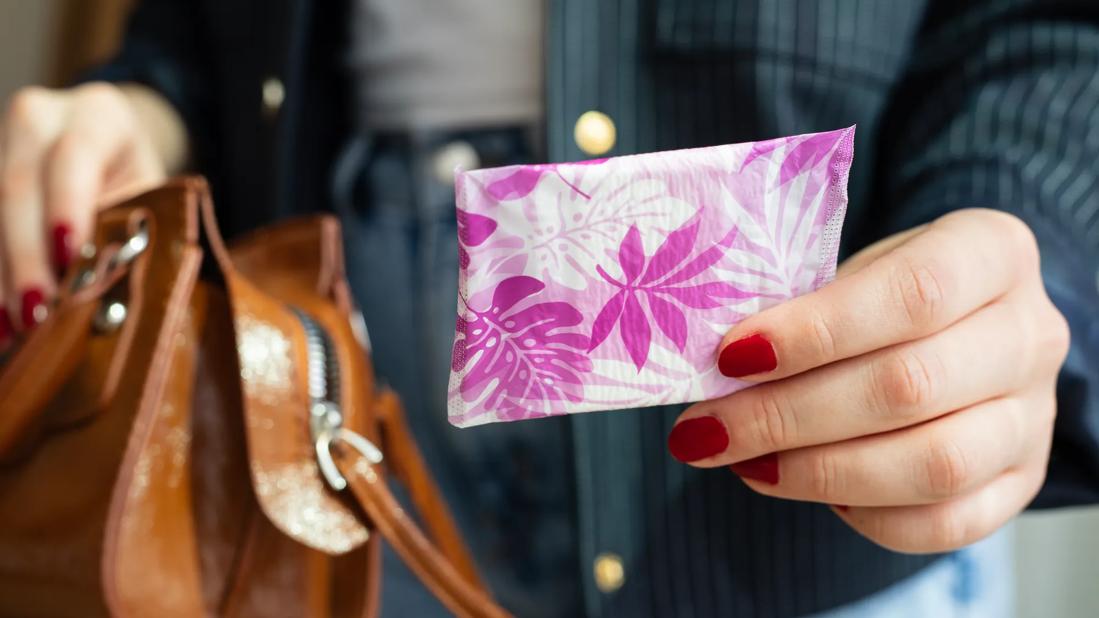Approximately 500 million people globally are experiencing 'period poverty'

Experts in adolescent gynecology are calling for increased awareness about menstrual healthcare, including access to resources and education about menses. They also highlight the monetary and nonmonetary costs of periods.
Advertisement
Cleveland Clinic is a non-profit academic medical center. Advertising on our site helps support our mission. We do not endorse non-Cleveland Clinic products or services. Policy
“Approximately 26% of the world’s population menstruates, which means about 800 million people are menstruating each day,” says Ellen Rome, MD, MPH, who leads the Center for Adolescent Medicine at Cleveland Clinic Children’s. “And, globally, about 500 million people are experiencing period poverty.”
This means they face persistent barriers to menstrual hygiene products, soap and clean water, a private environment to clean one’s body and dispose of products, and/or education about menses and sexual health.
In a paper published in Obstetrics and Gynecology Clinics of North America, Dr. Rome describes these challenges and discusses strategies for clinicians to improve access to menstrual healthcare in their practices and communities.
Stigma related to menstruation is a global issue, and one that manifests differently depending on the country, region or community, she explains.
“In some countries, menstrual debut represents a sexual or marital rite-of-passage, making adolescents and young adults targets for unwanted sexual contact, jeopardizing their safety, and creating fear and shame.” In others, it’s viewed as a curse associated with witchcraft.
But even in less extreme examples, stigma can impact the quality of education one might receive about menstruation and sexual health, leaving them confused, embarrassed, shameful and with low self-esteem.
How girls and boys are taught about menstruation varies widely. In some states where education on menses is not part of the middle school health curriculum, lack of knowledge leads to missed school and interrupted education.
Advertisement
Dr. Rome adds, “One adolescent menstruated for three years and missed at least one week of school monthly for that entire time before understanding what menses were; ‘I thought I was dying,’ she told her health education teacher.”
Access to menstrual hygiene products and safe areas to use them is also a concern globally, with certain populations more vulnerable, like “those experiencing homelessness or with unstable housing, in correctional centers, even across colleges campuses, or in areas where products are not easy to access,” explains Dr. Rome.
“Menstruating with dignity is a basic human right,” stresses Dr. Rome, “Period poverty can also lead to serious medical problems. Prolonged use of products or using non-menstrual products can result in open sores and infection, putting people at risk for serious medical challenges and even death.”
Dr. Rome also highlights the monetary and nonmonetary costs associated with periods.
According to some estimates, the average monthly cost of products in the U.S. is $10. However, this is likely conservative, given the additional costs of pain control medicine, laundry supplies and loss of productivity.
Many countries are making period products more accessible. Scotland is the first and only country to offer them free of charge, while others offer them freely in schools or have eliminated taxes on these products, deeming them essential. While 24 states in the U.S. have dropped the “tampon tax,” the price of products also increased in some of these states, making it an area ripe for more analysis, Dr. Rome notes.
Advertisement
There is also a cost to the environment.
“If you think about it, each little plastic applicator will take around 500 to 800 years to break down, and an average menstruater will use 5,000 to 15,000 pads and tampons in their lifetime. That's a major carbon footprint,” she says.
Reusable options, such as menstrual cups, menstrual underwear, and menstrual suppression interventions, have gained popularity in recent years. Dr. Rome encourages providers to talk to their patients about whether these might fit their lifestyle well.
Medical societies, like the North American Society for Pediatric and Adolescent Gynecology (NASPAG) and the International Federation of Pediatric and Adolescent Gynecology (FIGIJ), have released statements reinforcing menses as a normal, physiological process. Such guidelines invite clinicians to talk with their patients about menses, normalize it, and determine which tools and resources they might need to minimize disruptions in their daily lives.
While the issues surrounding period poverty are not likely to be upended soon, Dr. Rome offers the following for clinicians to help their patients immediately:
Advertisement
Summing it up, she says, “We want anyone to be able to walk into a public restroom and have what they need at that moment; we want more awareness of menstrual cups and the carbon footprint of menstrual products; we want people to be able to access adolescent medicine and pediatric gynecology to help with menstrual management. And we want culturally competent care about menstrual hygiene and menstrual access that empowers people to feel safe and productive during and in between periods”
Advertisement
Advertisement

A multi-pronged strategy for tackling cancer access problems

Lutheran Hospital team brings emerging treatments to community setting

Pediatric and adolescent reproductive providers are uniquely positioned to intervene

Partnerships with local social service agencies key to program success

Findings from large cohort analysis can guide ongoing quality improvement initiatives

For some older adults, a rural setting in late life may be protective

Findings reinforce the importance of multidisciplinary care

Mode of delivery does not affect patient satisfaction